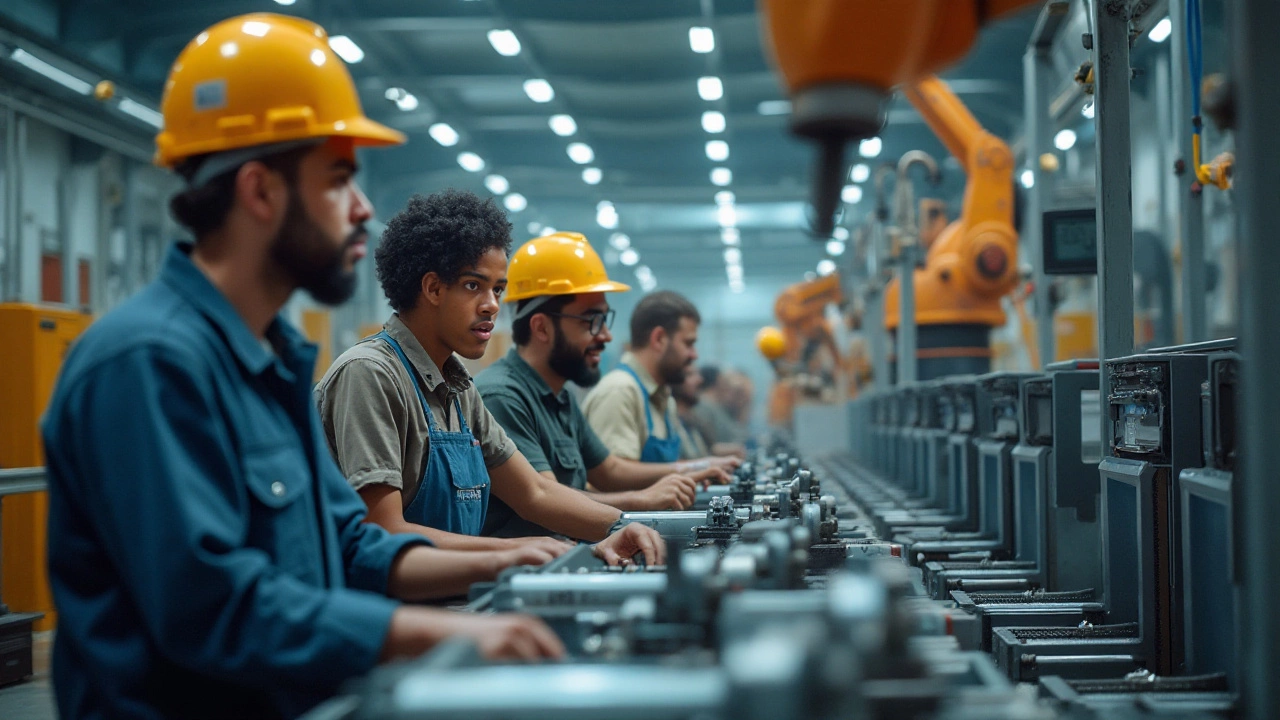US Manufacturing Overview – What’s Happening and Why It Matters
When you hear "manufacturing" most people picture big factories, assembly lines, and trucks loading up products for export. The United States still runs a massive network of plants that make everything from cars to chips. But the real picture is a mix of strengths, gaps, and new chances for growth.
How the US Stacks Up Globally
In the latest global manufacturing index the US sits in the top five, trailing only China, the EU, Japan and South Korea. That means American factories produce more value than most countries, thanks to high‑tech equipment and a skilled workforce. However, the share of global output has slipped from about 16% a decade ago to roughly 13% now. The dip isn’t because the US is losing quality—its productivity per worker is still among the highest.
What drives the ranking? Three things: automation, R&D spending, and export volume. Automated lines let a single plant churn out more units with fewer errors. Companies invest heavily in research, especially in aerospace, medical devices and semiconductor manufacturing. And America ships a lot of finished goods to Europe, Canada and Latin America.
Key Trends Shaping American Factories
First, the rise of the “5 M’s” – Man, Machine, Material, Method and Measurement – is redefining how plants operate. Workers are paired with collaborative robots, materials are tracked with RFID, and real‑time data tells managers when a line is drifting off target. Second, sustainability is becoming non‑negotiable. Factories are cutting energy use, recycling scrap and adopting greener chemicals to meet both regulations and customer demand.
Third, supply‑chain reshoring is gaining steam. After recent disruptions, many companies are moving parts of production back to US soil to reduce lead times and avoid tariffs. This creates new jobs in regions that haven’t seen a factory in years, but it also requires a pool of technicians who understand modern equipment.
Finally, digital factories are emerging. Cloud‑based platforms let engineers simulate a new product line before the first bolt is turned. The result is faster roll‑outs, less waste and cheaper testing.
If you run a small business or a startup, these trends spell opportunity. Focus on niche products that benefit from high precision, such as medical components or custom electronics. Leverage US‑based contract manufacturers who already have the 5 M framework in place. And consider partnering with local colleges for apprenticeship programs – you get a pipeline of talent, and schools get real‑world experience.
In short, the US manufacturing sector is still a powerhouse, but it’s evolving fast. Automation, data, sustainability and reshoring are the forces reshaping the landscape. By understanding where America stands and what’s changing, you can make smarter choices whether you’re buying, selling or building a factory.
Top U.S. State for Manufacturing: Insights and Data
The United States encompasses a diverse manufacturing landscape, with certain states standing out due to their economic capabilities and strategic advantage. This article delves into which state holds the title for the most manufacturing in the U.S., examining various aspects such as economic impact, historical context, and government schemes that drive their manufacturing success. By understanding these factors, readers can gain a clearer picture of how regional economies are shaped and what policies might influence future growth. Additionally, insights into workforce and technological advancements offer a comprehensive view of the topic.
Read More